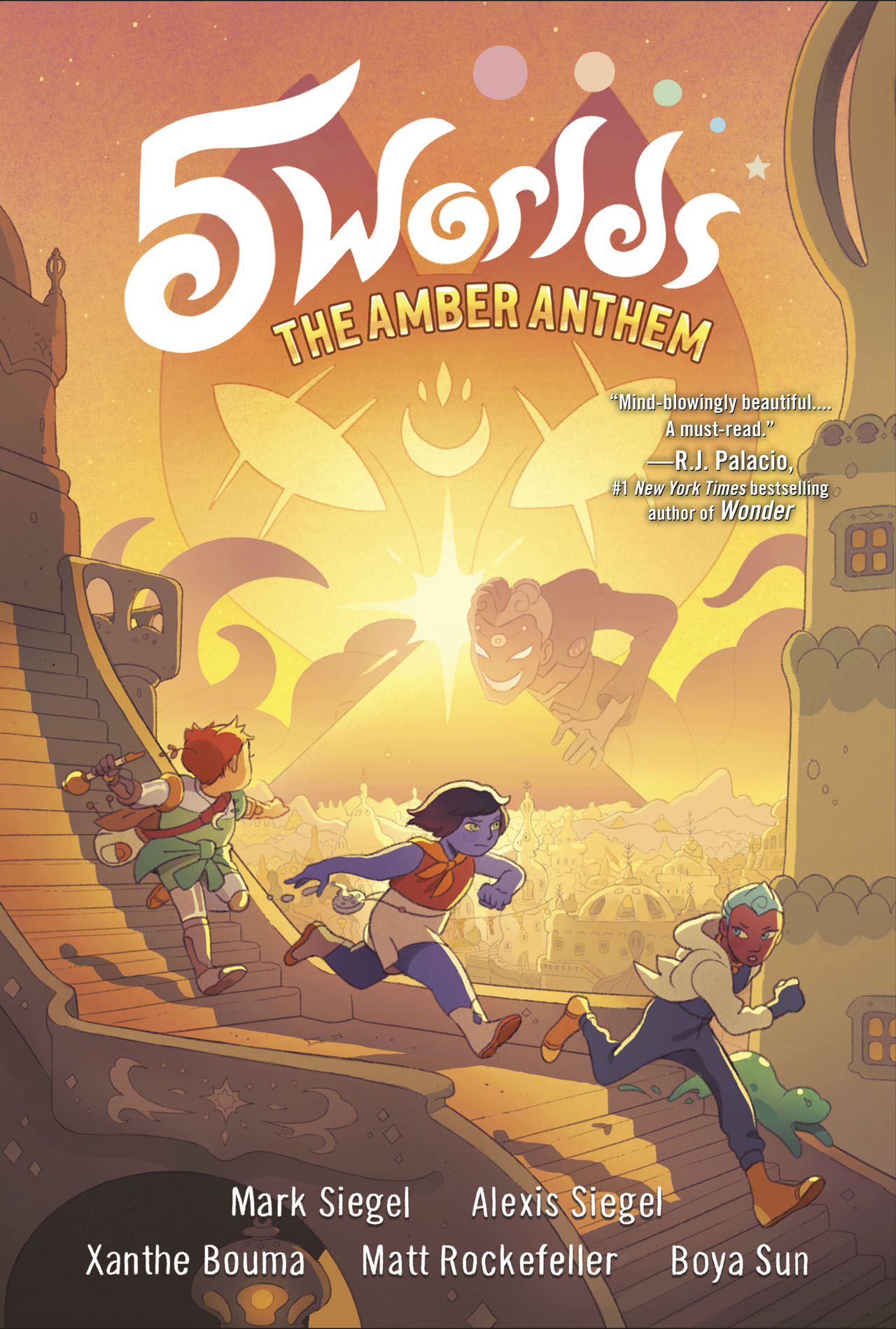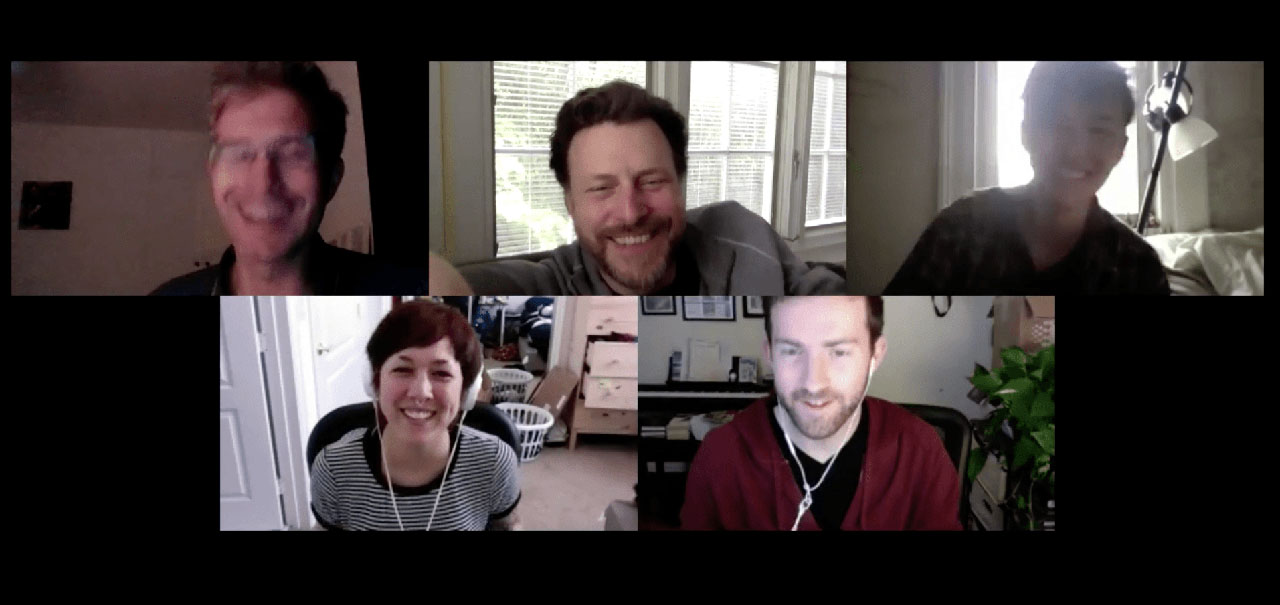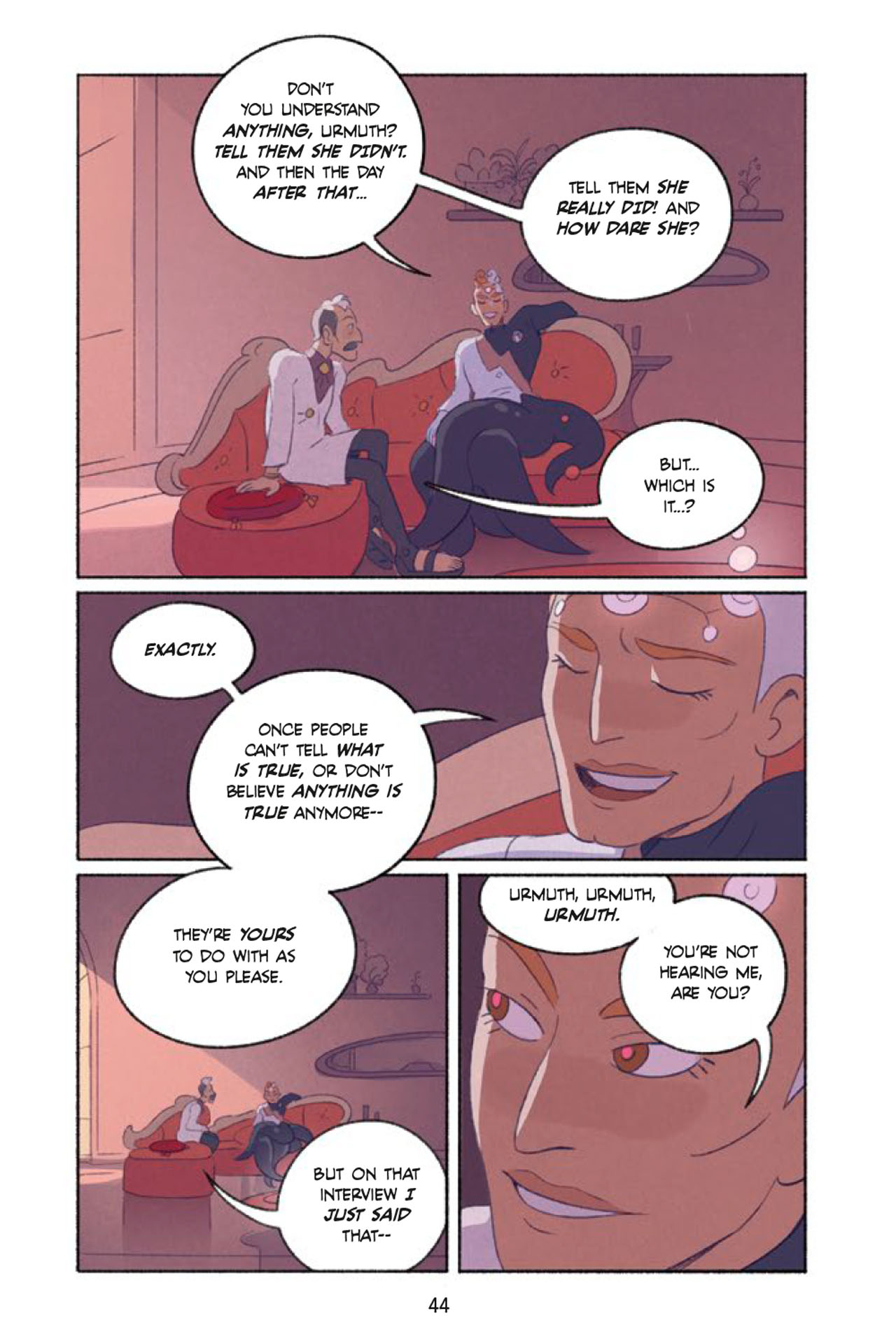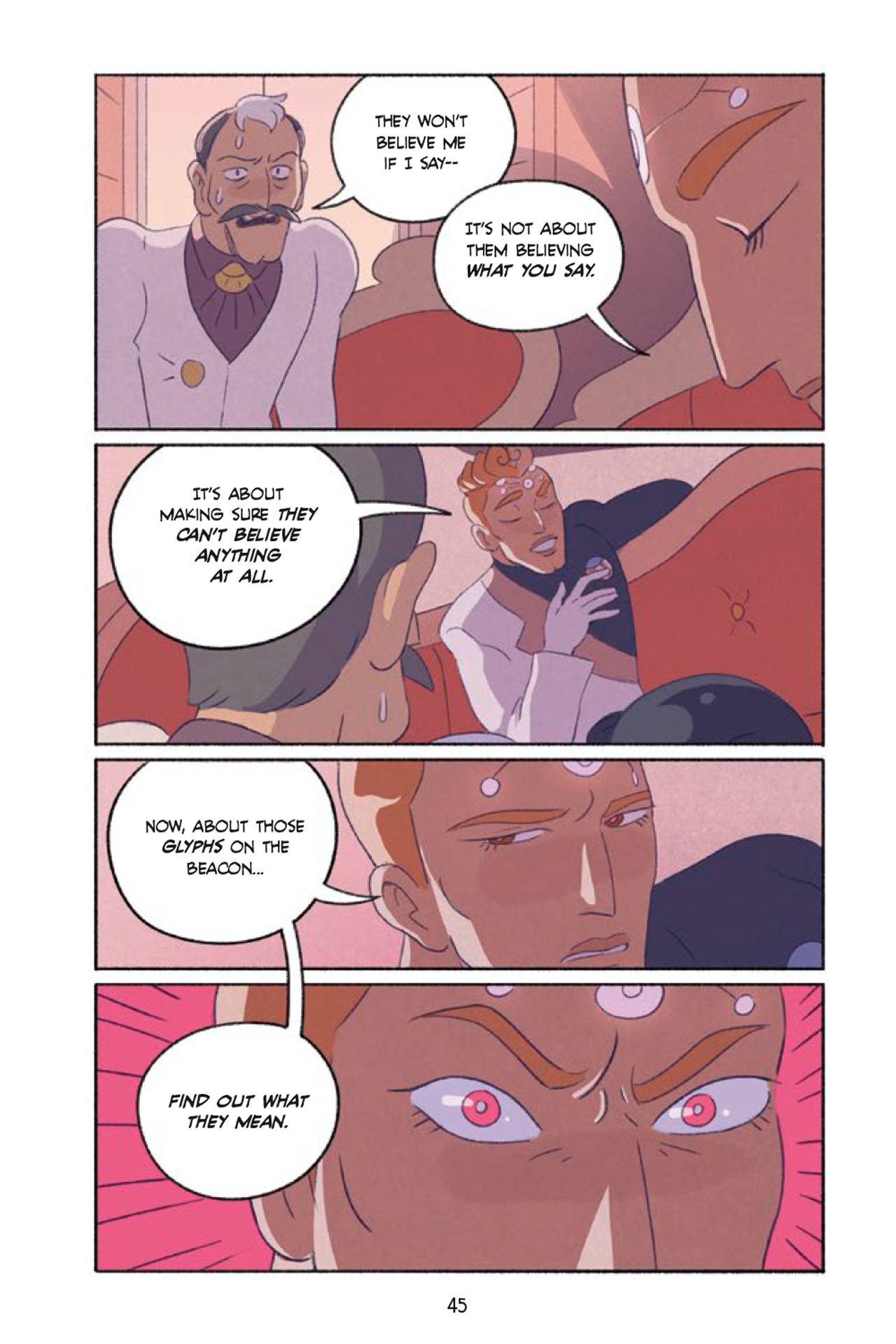Hit OGN series 5 Worlds aims to show young readers "a genuine reflection of the nature of evil"
We go behind the scenes of the all-ages interplanetary epic with co-writer Mark Siegel

5 Worlds, the all-ages SF/fantasy graphic novel series from Penguin Random House, has become an award-winning sensation with its tale of a star system menaced by an ancient evil – including "sand dancing," androids, politicians, and much more.
In the recently-released fourth volume, The Amber Anthem, the team must uncover a mysterious song that is the key in their battle, as a charismatic figure builds his political power to turn the worlds against them.
We spoke with Mark Siegel (who co-created the book with his brother Alexis Siegel and the art team of Xanthe Bouma, Boya Sun, and Matt Rockefeller) about the latest volume, the creative process behind it, his influences, and much more.

Newsarama: Mark, for those that haven't read The Amber Anthem yet - clue them in.
Mark Siegel: In Book Four, Oona Lee arrives on Salassandra determined to light the yellow beacon and continue her quest to save the Five Worlds from the evil Mimic’s influence. But the beacon is encased in amber! An ancient clue says that Oona and her friends must seek out the Amber Anthem to succeed.
Meanwhile, Stan Moon sends an evil Jax robot to assassinate Oona and hunts down An Tzu himself. Turns out, as An Tzu fades away from his Vanishing Illness, he’s becoming someone else—someone who could tip the scales in the battle for the Five Worlds...
Nrama: The author of a well-known fantasy series once wrote, “this tale grew in the telling.” How has 5 Worlds grown since you started the series? What are some of the ways that the story has surprised you?
Get the best comic news, insights, opinions, analysis and more!
Siegel: A good project is a bit like a marriage: you control what goes into it at the start, and that controls you later. Like a marriage, it develops a life of its own, and indeed, it should “grow in the telling.”

5 Worlds has grown and surprised us more with every new volume. As we're working on the fifth and final book now, the story lets us know things it likes and doesn't like. For all five of us on the creative team, it's become almost more about listening, rather than contriving it. What does Oona do next? How does Jax respond to that? It tells us.
What's been interesting is our main characters are in constant transformation, physically, mentally, emotionally — and their worlds are also in transformation. And yet, throughout the changes, there are core features we've come to know about Oona, An Tzu and Jax, just like in real people. They have their deeper nature, which we've come to know and love.
Nrama: What is your collaborative process like with Alexis and with your artistic team? How has it changed, or at least evolved, since you started the series?
Siegel: Alexis and I had never written together, so we've been learning how each of us enjoys different challenges, or how we can team up to tackle a scene. With Matt and Boya and Xanthe, our relationships have grown in the creative process. At first, they were like hired guns, joining "our" project — but it really has become our project, as we all generate into these characters and these worlds, with a shared sense of mission and passion.
In the best creative teams, a kind of clairvoyance can grow whereby teammates find a shorthand to communicate, and magical moments happen when a new idea drops in for several of us at the same time. There's lots of that happening now, and also a sense of every one of us bringing their best game, their best attitude to each new book.

Practically speaking, the steps of making 5 Worlds are: 1) Alexis and I script, 2) I do the first thumbnail/storyboard from the script, 3) Matt, Boya and Xanthe split up the scenes between themselves and pencil them out, 4) Matt does all the linework, 5) Xanthe designs key colors and scene palettes, and 6) Boya and Xanthe clean up the final color and add final touches. All throughout, I'm keeping an InDesign layout file, where the linked artwork is being updated at every stage.
Nrama: With each volume, you're exploring a new world, and creating different levels of conflict — the external invasion in the first volume, the corrupted monarchy in the second, the flawed political/business system in the third, and now the religious conflict and media manipulation in this fourth volume. What are some of the biggest challenges in evolving and changing the conflict from volume to volume?
Siegel: Each world follows a unique template, with its own history, its own cultures, its own distinct appearance and atmosphere — but throughout them all, this nefarious influence has been taking hold.
The Mimic, our great villain, exploits each world's weaknesses to grab power; so, it shape-shifts to play into each society's own brand of corruption. Oona Lee, in her quest to light each of the five beacons, keeps being confronted by the Mimic, externally and internally.

One of our challenges was bringing a genuine reflection on the nature of evil to young readers; another was trying not to make it seem too much like a mirror for our world today. The beauty of Tolkien's ring of power is that it applies to any time in history because it's a meaningful meditation on power's temptations.
Nrama: For that matter, what are some of the biggest challenges in developing the societies of these worlds, and keeping all this information straight? I was noting this volume does more cross-cutting across the different worlds than before.
Siegel: We have the advantage of a few years of living with these worlds, and getting to know them, explore them, map them out. Those maps in the endpapers, by the way, were drawn by Matt Rockefeller. I've met young fans who study them!
So, it is a lot to keep straight, but luckily there are five of us, plus our invaluable editor Chelsea Eberly — checking for continuity and consistency.
Nrama: What can you tease readers about what to expect in this volume?
Siegel: A world with a whole new vibe. Our little fellowship further challenged, and growing, and bonding with one another. And a lot more with one of our most beloved characters: the living oil Ram Sam Sam!
Nrama: What do you feel the real world could learn from the Five Worlds at this time?
Siegel: Argh! I love the question, but I'm getting this strong feeling I shouldn't answer it.

Nrama: Fair enough. One thing I thought might be fun is if you could tell our readers about some of the works across different media that helped influence 5 Worlds, either directly or indirectly. You credit a few names like Miyazaki and LeGuin in the volumes, but curious about some deeper cuts, particularly things that might be of interest to an all-ages readership.
I made a list of some of the references I recognized, or thought I did – the ship the Moon Moth references Jack Vance, the aboriginal shapeshifters are reminiscent of Gene Wolfe’s The Fifth Head of Cerberus, Ram Sam Sam is from a Moroccan children’s song, The Smee is from Peter Pan and Jep Etto is…well, obvious...
Siegel: Ha! That is a very cool list you put together! Some of the obvious ones are LeGuin, Moebius, especially his Edena books, Miyazaki, Urasawa, Avatar the Last Airbender, most evidently, perhaps.

You're absolutely right in picking up on Jack Vance and Gene Wolfe, as well as classic fable and fairy tale references. The Graham Hancock ancient history researches, like Fingerprints of the Gods, nourished our worlds at some level. And also, some contemporary SFF writers like Jeff VanderMeer, Becky Chambers, and John Scalzi.
Nrama: What's next for you, with 5 Worlds and beyond?
Siegel: Right now, we're deep into script rewrites for Book Five, which I can't wait to see into the world. There's also some exciting stuff brewing in other media, which I do hope to share soon.
I have several projects underway, alone and in collaborations, alongside the continuing project of publishing First Second books. Always the right amount of too much.
Zack is a comics journalist, who has written primarily for Newsarama, GamesRadar, and Indy Week. His words have also appeared in The Washington Post, AXS, VOX, The Sports Network, Gambit, and more.


